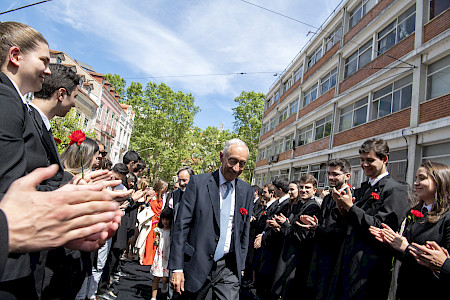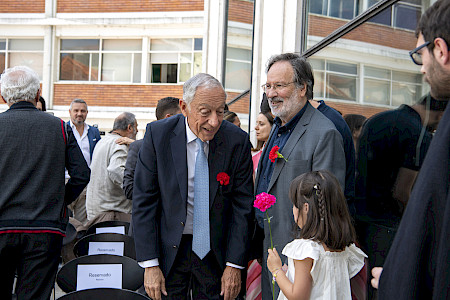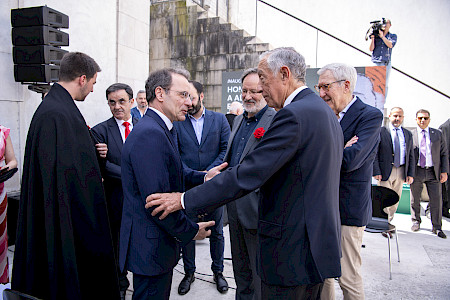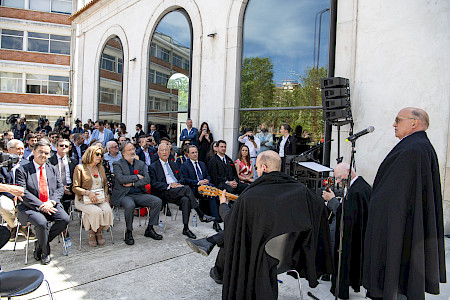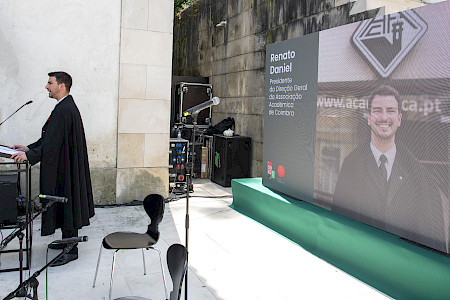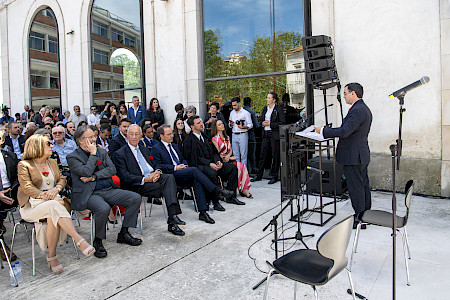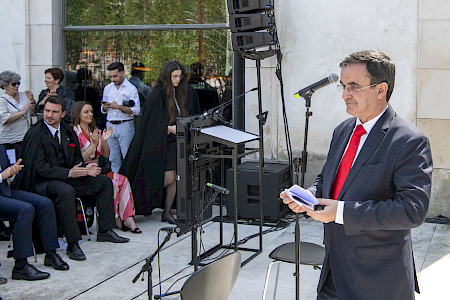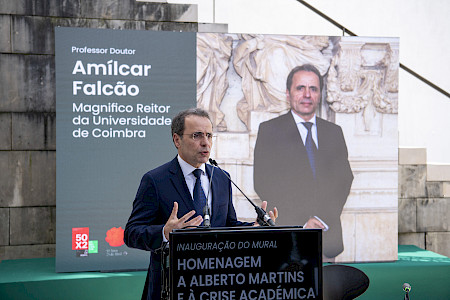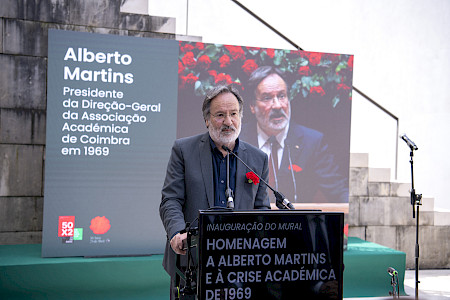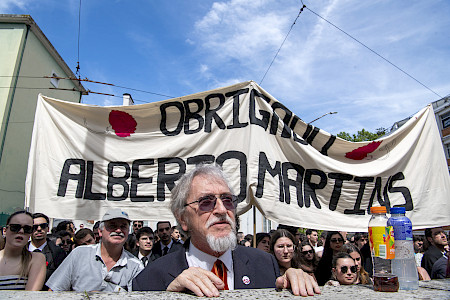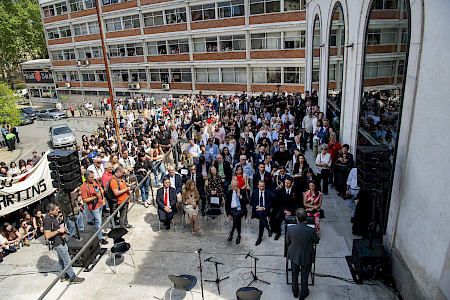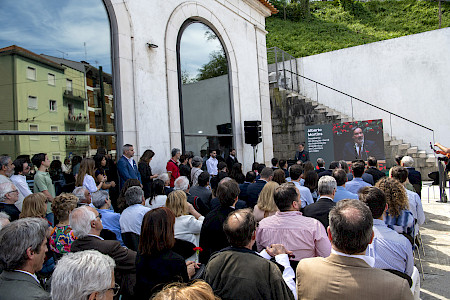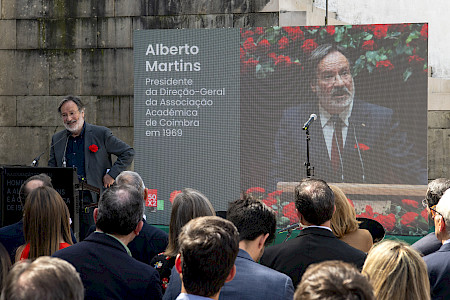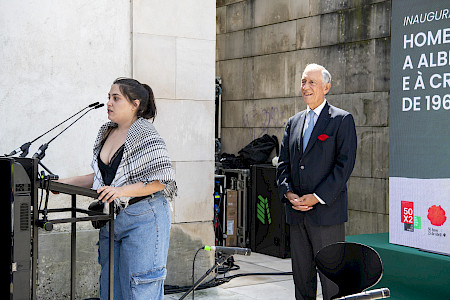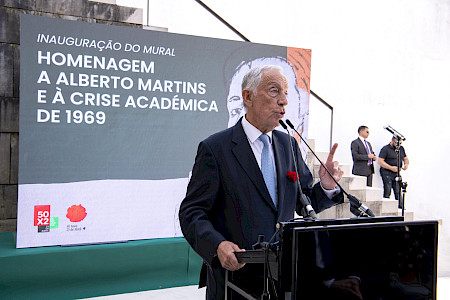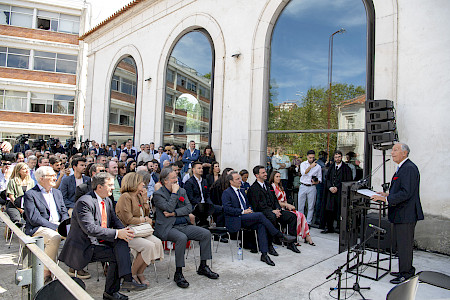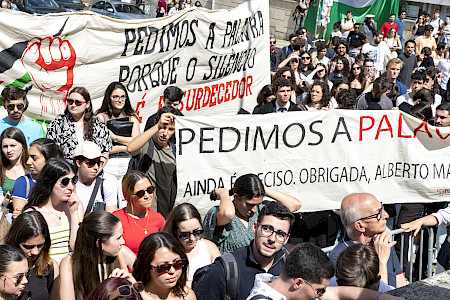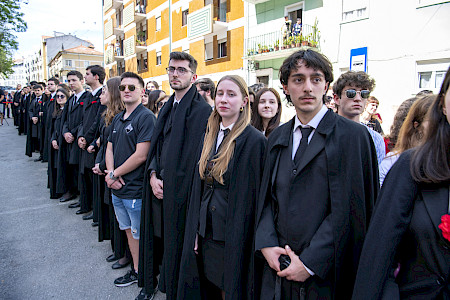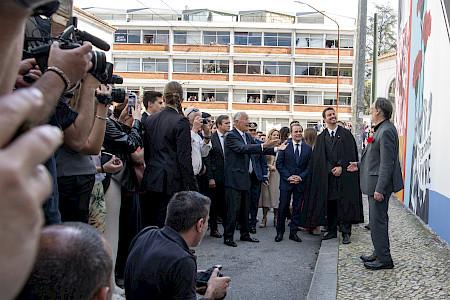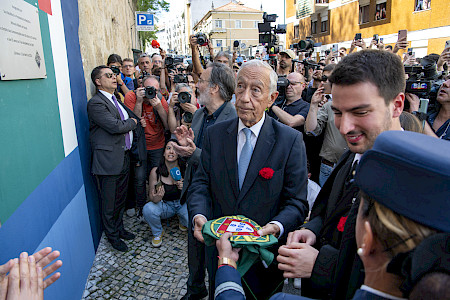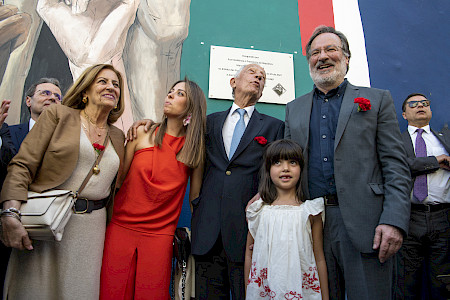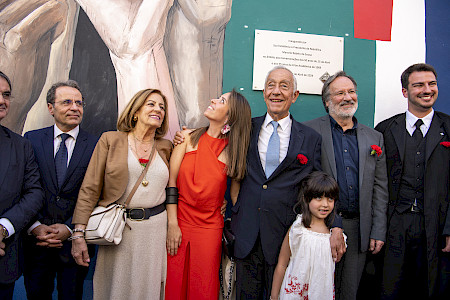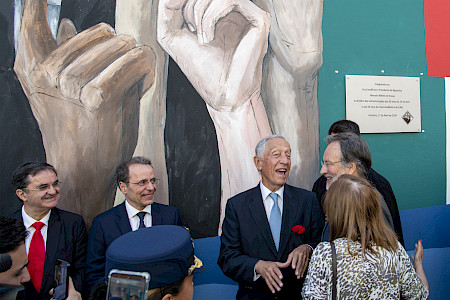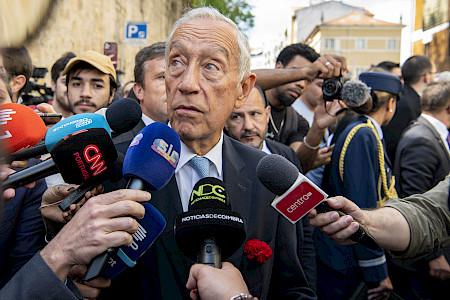Mural honouring the 1969 academic crisis inaugurated by the President
Hundreds of people gathered at the AAC building, the site of the new mural, to attend the ceremony.
The 55th anniversary of the '69 Academic Crisis in Coimbra, celebrated on the 17th of April, prompted the Academic Association of Coimbra (AAC) to create a mural in tribute to the event and its central figure, Alberto Martins.
During the inauguration ceremony, all the speakers emphasised the struggle for freedom and democracy, past, present and future: President Marcelo Rebelo de Sousa, the Rector of the University of Coimbra (UC), Amílcar Falcão, the President of the General Directorate of the AAC, Renato Daniel, the Vice-President of Coimbra City Council (CMC), Francisco Veiga, and the honoured protagonist, Alberto Martins.
The President of the Republic praised and thanked "one of Portugal's greatest" and said that "the seed planted by Alberto Martins united Coimbra, united Portugal" and "marked the beginning of the end of the dictatorship". Marcelo Rebelo de Sousa stressed that the famous "I request the floor" showed "one voice and courage, one voice and determination, one voice embodying a collective will, one voice representing the solidarity of an entire academy and the city of Coimbra". That voice was that of Alberto Martins".
"In a ceremony punctuated by several ovations from the hundreds of attendees, the UC Rector reminded the audience that "democracy must be 'nurtured' and regarded as a 'process' rather than something taken for granted". He emphasised that the UC will continue to commemorate this date and stressed the importance of students' voices, stating that they "should be heard now and always. Reflecting on the lessons of that April day in 1969, Amílcar Falcão concluded, "I hope that our students maintain this irreverence, that they continue to express their views and that they continue to have freedom of expression and thought".
Painted by artists c'Marie and Egrito, the mural was described by the AAC representative as a 'living monument to courage, resistance and the struggle for freedom'. Renato Daniel hopes it will also serve as a "beacon of hope, a constant reminder of the transformative power of collective action, the voice raised against oppression and the unbreakable will to fight for a better world".
Visibly moved by the tribute, Alberto Martins, President of the AAC General Directorate in 1969, remarked that "there is no future without memory" as he recalled that historic day. 'Confronting the faces of the dictatorship was not only my struggle, but that of the Academy of Coimbra—a generation that asked to speak for a just cause: to give students a voice ." Martins stressed the ongoing importance of fighting for 'the defense of peace and fair economic, social, and environmental development,' both today and in the future.
This content is loaded from a third-party and is not available because your browser has cookies disabled.
Here's what you can do: access content in its original location or enable cookies in your browser
Translator's note: On the 17th of April 1969, during a visit to the University of Coimbra by the President of Portugal and other high-ranking representatives of the authoritarian regime known as the Estado Novo [New State], which had been ruling the country since 1933, a young student called Alberto Martins, who was President of the AAC, and the voice of the students of Coimbra, asked to be given the floor. His request was denied. In the ensuing uproar, Martins climbed onto a chair and 'dared' to speak, leading to his arrest. This was the beginning of the Coimbra academic crisis of 1969, and the first stone was laid towards the Carnation Revolution that would take place five years later, on the 25th of April, 1974.

